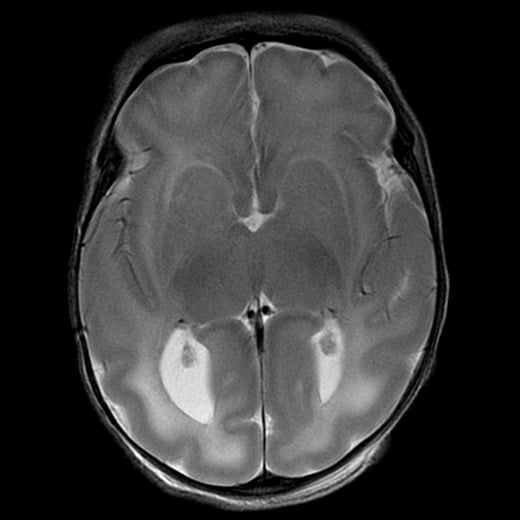Female in her 30s with painful left shoulder.
[Left]: X-ray shows a mass arising from the left proximal humerus and extending into the adjacent shoulder soft tissues with really aggressive periosteal reaction (“hair on end”). The proximal humerus itself is also heterogeneous with lucent areas. The lateral surface of the upper humerus shows “saucerization,” where the cortex is thinned out and looks like a saucer seen on edge.
[Middle]: MRI IR sequence shows a hyperintense bony mass with large soft tissue component.
[Right]: MRI postcontrast T1 IDEAL shows that the mass is enhancing.
This turned out to be high-grade surface osteosarcoma.
I find these posts fascinating, but I am a layperson with only whatever medical knowledge a doctor father who loved to share imparted. I can somewhat understand these images, and the MRI looks obviously anomalous to me, but I always struggle with X-rays! Would anyone care to help me understand what exactly it is in the X-ray that indicates an issue? To my uneducated eyes, it doesn’t seem that different from a healthy shoulder.
Is it the fact that there’s “cloudiness” between the bone and skin? I guess I can somewhat pick that out now, but I just don’t feel confident I would ever have noticed it on my own without the context of this post.
Hi. Try to match the outline of the humerus to that on the radiograph. Then the big bright mass to the right of the humerus (going by the picture) is the cancer. Now see if you can make out the rough outline of it on the radiograph.
The cloudiness you’re seeing is calcification within the tumor. Specifically, the outward “tendrils” (as someone else called it) exploding out from the margin of the humerus is really aggressive periosteal reaction, which I’ve posted a few examples before already: one, two.
I think I understand that, thank you. Your other examples are very helpful, though it took some study before I could tell the differences. Would I be right in saying that all tumors calcify, and that the level of calcification (as well as the orientation of the “tendrils”) indicates the progression of the tumor?
No they don’t all calcify.
The tumor here is growing from the bone and destroying it. The normal bone cells are trying to repair by making more bone. If faster the tumor destroys and grows, the less smooth the repaired bone can look.
It looks like white tendrils emanating from the bone, pushing into the cloudier area. Definitely looks off, as you should not have tendrils like that on an X-ray.
Ah interesting, thank you! What are those tendrils - is it possible to say? I would imagine they’re not blood vessels, as that would make me assume you’d also be able to see the rest of the normal, healthy vasculature in the body.
Not sure, I’m also a layman when it comes to X-ray interpretation. Given the MRI showed it was a bony mass, I’m going to guess the tendrils are themselves bone tissue.
It’s called periosteal reaction. Here’s a few examples I posted already: one, two.
Great pictures side by side and nice work ob the explanation :)



